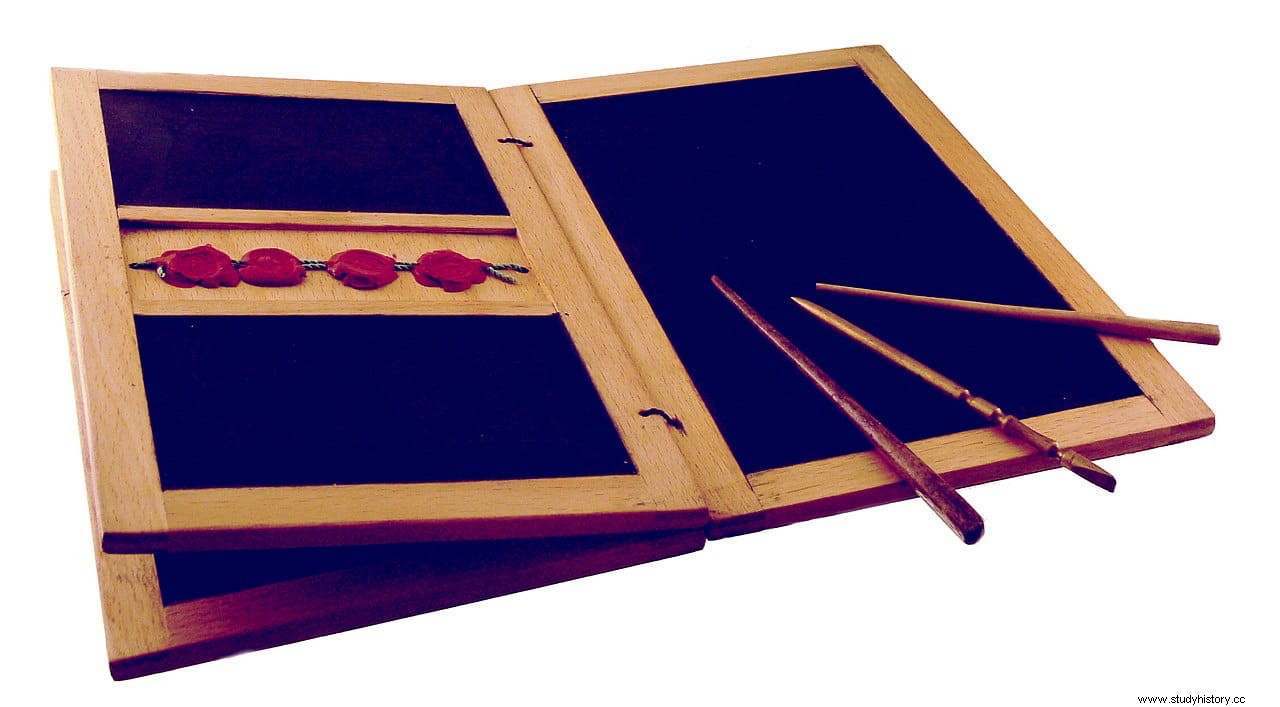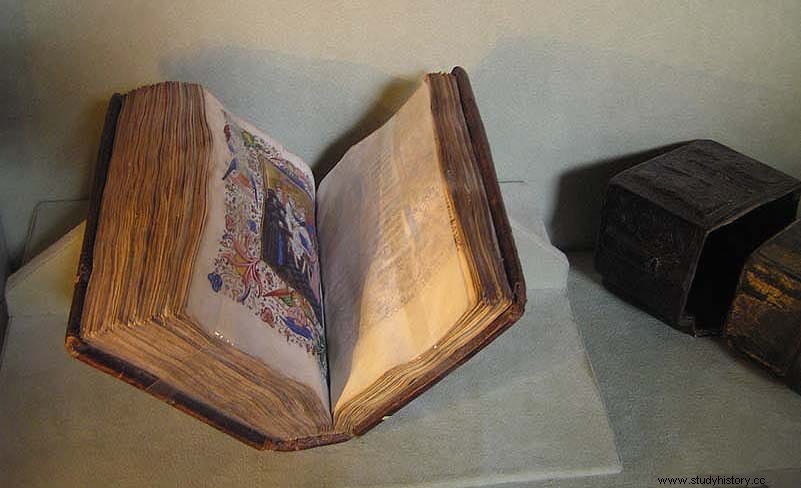Recently, as a result of the article we published on the origin of the books in the Library of Alexandria, a somewhat fussy reader (and by the way, quite wrong) rebuked us on a social network, assuring us that those were not books, but manuscript scrolls.
What he evidently did not know is that the scrolls are nothing more than a form of book. Another is the codices, and one more the current electronic books.
Actually, what that reader must have wanted to say, without knowing how to say it, is that there were no codices in the Library of Alexandria. But books, books there were, although in roll format.

As some may be wondering, indeed, the codex is nothing more than the book format that we currently call... book. We call it that by extension, because for many centuries there have been no books in a format other than the codex. At least until the arrival of electronic books, whose format is totally different from the scroll and the codex.
But when and why did books start to be made in the form of a codex instead of a scroll? It happened, according to the consensus of historians, in the Roman world. These already used to write wooden tablets covered with wax and joined by strings, which gave rise to the appearance of notebooks with papyrus or parchment pages in the 1st century AD.

Around the same time, the poet Marcial describes in his works books in the form of a codex, praising their convenience for the ease of reading they provide, and for taking up less space than a parchment roll, being easier to hold by hand. .
That economy of space and ease of reading would be the keys to the imposition of the format. However, it would still be necessary to wait a while, since the diffusion of the codex would go hand in hand with that of Christianity. The reason it was the preferred format for Christians is that it allowed biblical references to be consulted much faster and easier than parchment or papyrus scrolls.
Proof of this is that in the library of the Villa of the Papyri, buried in Herculaneum by the eruption of Vesuvius in 79 AD, all the books are scrolls. While in the Nag Hammadi library, from around 390 AD, all the texts are codices.

Even though the format may have originated in Rome, the earliest surviving codices fragments come from Egypt and are dated to between the end of the 1st century and the beginning of the 2nd century AD. Evidently the first codices were made of papyrus or parchment, since the secret of papermaking would still take six centuries to reach the West, as we saw in Talas, the colossal battle between the Arabs and the Chinese that could have been the origin of the spread of the secret. of paper, and the first European book made with paper dates back to around the year 1000.
Around the 16th century, the indigenous peoples of Mesoamerica developed a format very similar to the codex of European Antiquity, although made with strips of fig bark or vegetable fibers, giving rise to the Mayan and Aztec codices.

As we have already seen, the advantages of the codex over the roll resided in the economy of materials, the codex allowed papyrus or parchment to be written on both sides and not on one, and in the possibility of random access instead of sequential access of the rolls.
Almost as soon as the codex was invented it began to replace the scroll, so that by the 6th century parchment scrolls had all but disappeared as a writing medium.
Today all books are codices, although the term has come to designate mainly medieval manuscripts.
